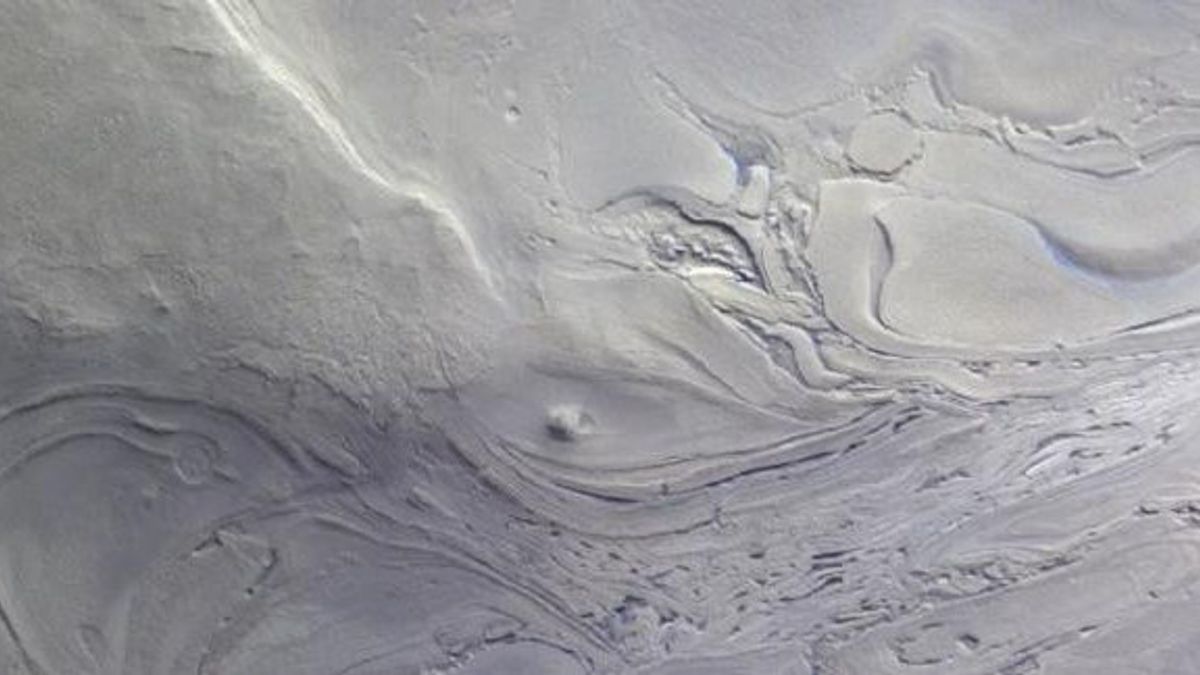JAKARTA - The European Space Agency (ESA) shared a stunning view of Mars' small crater Hellas taken using the CaSSIS camera on the ESA-Roscosmos ExoMars Trace Gas Orbiter in May.
This image shows the wild wonder of the eddies and curves that the space agency describes as a mesmerizing sight.
Known, Hellas has a diameter of 1,430 miles (2,300 kilometers) and a depth of 4.3 miles (7 kilometers), it is a small crater, one of the largest in the Solar System. This is one of the most interesting regions on Mars.
The ESA traces the history of Hellas between 3.8 and 4.1 billion years ago when an asteroid hit the planet. They found what looked like elongated fingerprints engraved on the Martian soil. The expanse of surface seen in the image is one of the lowest points on Mars.
"The swirling nature of the landscape evokes a feeling of flow. The exact reasons for its origin are enigmatic, and can be attributed to one of many different processes namely salt tectonism, or the condensed deformation of ice and sediment," the ESA said. as quoted from CNET, Saturday, October 23.
Furthermore, to strengthen its research, the Trace Gas Orbiter spacecraft has studied the Red Planet and cataloged its atmospheric gases. This is one aspect of the ExoMars program, which will also involve sending a rover to Mars in 2022. The rover, like the orbiter, is a joint project of the ESA and the Russian space agency Roscosmos.
That's not the only sight, NASA's Mars Reconnaissance Orbiter has also managed to capture other images from inside Hellas crater, including spotting scratch marks, these likely created by dry ice sliding down the dunes.
However, the three space agencies ESA, NASA and Roscosmos intend to learn more about the Red Planet, because many mysteries remain to be solved.
The English, Chinese, Japanese, Arabic, and French versions are automatically generated by the AI. So there may still be inaccuracies in translating, please always see Indonesian as our main language. (system supported by DigitalSiber.id)













